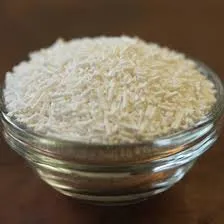
e450a food additive
Understanding E450a The Role of Diphosphates in Food Additives
Food additives are ubiquitous in the modern food industry, serving various purposes from enhancing flavor to improving shelf life. One such additive is E450a, also known as diphosphates. This compound plays a significant role in food processing, and understanding its functions, uses, and safety can help consumers make informed choices about their diets.
What is E450a?
E450a refers specifically to the food additive sodium diphosphate, a type of phosphoric acid salt. It is sometimes listed as diphosphoric acid in ingredient lists. E450a falls under the category of phosphates, which are commonly incorporated into a variety of food products. Generally, phosphates are known for their capacity to regulate acidity, enhance texture, and act as preservatives.
Functions of E450a in Food
E450a performs several critical functions in food manufacturing
1. Emulsifying Agent E450a helps stabilize mixtures of ingredients that usually do not blend well, such as oil and water. This property is particularly important in products like salad dressings, sauces, and margarine, where a consistent texture is vital.
2. Texture Enhancer The inclusion of E450a can improve the mouthfeel of processed foods. In products like cheese, it helps maintain a desirable texture and prevents separation of fat and moisture.
3. Leavening Agent In baked goods, E450a serves as a leavening agent when combined with baking soda. It releases carbon dioxide when heated, causing the dough to rise and leading to a lighter, airier product.
e450a food additive

4. Preservative E450a can help inhibit mold and bacterial growth, thus extending the shelf life of various food products. This property is especially beneficial in processed meats and baked goods.
Safety and Regulatory Status
E450a is generally recognized as safe for consumption when used within established limits. Regulatory bodies such as the European Food Safety Authority (EFSA) and the U.S. Food and Drug Administration (FDA) have evaluated the safety of phosphates, including diphosphates. They have determined that, when consumed as part of a balanced diet, these additives do not pose significant health risks.
However, excessive consumption of phosphates can lead to health concerns, particularly for individuals with kidney problems. High phosphate levels can affect calcium balance in the body, potentially leading to bone-related issues. Therefore, while E450a is safe for most consumers, moderation is always advised.
Common Food Products Containing E450a
E450a can be found in a wide array of processed foods. Some typical examples include
- Processed cheeses where it improves texture and meltability. - Baked goods such as cakes and pastries, where it acts as a leavening agent. - Cured meats where it helps retain moisture and enhance flavor. - Sauces and dressings where it acts as an emulsifier, ensuring a consistent product.
Conclusion
E450a, or diphosphates, is a versatile food additive with a variety of important roles in the food industry. Its functions as an emulsifier, texture enhancer, leavening agent, and preservative make it invaluable in ensuring food quality and safety. While it is deemed safe for most consumers, being aware of its presence in food products and understanding its implications can help individuals make healthier dietary choices. As with many food additives, moderation is key to enjoying the benefits without potential drawbacks.
-
Pure Sodium Dichloroisocyanurate Dihydrate | Powerful DisinfectantNewsAug.29,2025
-
Industrial Chemicals: Quality & Purity for Every IndustryNewsAug.28,2025
-
Nitrile Rubber Honoring Strict Production StandardsNewsAug.22,2025
-
Aspartame Ingredients Honoring Food Safety ValuesNewsAug.22,2025
-
Fertilizer for Balanced Plant NutritionNewsAug.22,2025
-
Cyanide Gold Processing with High Purity AdditivesNewsAug.22,2025
-
Formic Acid in Textile Dyeing ApplicationsNewsAug.22,2025
Hebei Tenger Chemical Technology Co., Ltd. focuses on the chemical industry and is committed to the export service of chemical raw materials.
-

view more DiethanolisopropanolamineIn the ever-growing field of chemical solutions, diethanolisopropanolamine (DEIPA) stands out as a versatile and important compound. Due to its unique chemical structure and properties, DEIPA is of interest to various industries including construction, personal care, and agriculture. -

view more TriisopropanolamineTriisopropanolamine (TIPA) alkanol amine substance, is a kind of alcohol amine compound with amino and alcohol hydroxyl, and because of its molecules contains both amino and hydroxyl. -

view more Tetramethyl Thiuram DisulfideTetramethyl thiuram disulfide, also known as TMTD, is a white to light-yellow powder with a distinct sulfur-like odor. It is soluble in organic solvents such as benzene, acetone, and ethyl acetate, making it highly versatile for use in different formulations. TMTD is known for its excellent vulcanization acceleration properties, which makes it a key ingredient in the production of rubber products. Additionally, it acts as an effective fungicide and bactericide, making it valuable in agricultural applications. Its high purity and stability ensure consistent performance, making it a preferred choice for manufacturers across various industries.





